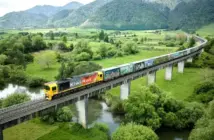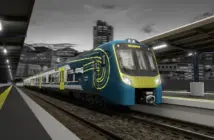Construction of Auckland’s City Rail Link (CRL) will require about 1600 people delivering the project at its peak, which could include opportunities for hundreds of workers who are new to the workforce or not currently employed
at its peak, which could include opportunities for hundreds of workers who are new to the workforce or not currently employed
The CRL is New Zealand’s biggest infrastructure project, construction on the underground rail link connecting Britomart and the city centre to the western line near Mt Eden began in December 2015.
Auckland Mayor Phil Goff says this is great news for Aucklanders currently not in employment.
“Construction on the CRL is ramping up with the first two contracts and the release of more tenders for the future work. We’re going to need a wide range of skills and that means fantastic job opportunities opening up.
“The boom in construction in the city has created a critical skill shortage in a number of areas and the City Rail Link will provide opportunities for people to find jobs, get trained and develop career pathways.”
Goff adds, “The CRL is an important project for Auckland. It will double the capacity of our rail network and ease congestion enabling 30,000 people an hour to move by rail during peak travel times.”
The project estimates that at peak 600 general construction workers will be needed as well as those with more specialised skills.
Labour requirements will vary with opportunities for new entrants to the workforce as well as the need for skilled labour and trades including plumbers and electricians and those involved in specialist rail systems and signalling.
Project Director Chris Meale says: “We’re looking for contractors to provide internships, cadetships, apprenticeships or equivalent pathways to learning as well as upskilling and reskilling to equip people for the present and future.
“The project is a long-term employment offering, with the CRL not due to be completed until 2023, giving time for people to develop and progress in their careers.
“This opens up opportunities for employment, training and social innovation especially for Mana Whenua, Māori, Pasifika and young people aged 15 to 24 years. This will respond to the 162,000 young people of that age who are not in employment, education or training in New Zealand, including 27,000 Māori and 11,000 Pasifika people.
“CRL is committed to promoting a culture of equity, inclusion and diversity with a social outcomes strategy that also targets others facing barriers in the labour market.”
He says pre-employment training will build confidence and competence, provide them with relevant work ready skills and significantly improve their chances of gaining quality employment in the construction, infrastructure and rail industries.
“We also want to encourage socially innovative businesses. Such businesses want to make a profit but their point of difference is that they generate social benefits beyond the products and services they deliver. Many Māori and Pasifika businesses would be considered socially innovative.
“CRL wants to encourage the upcoming generation to pursue careers in the trades and infrastructure sector through targeted and innovative school, university and educational institute programmes. It’s an exciting sector with diverse opportunities that has a great future.”




